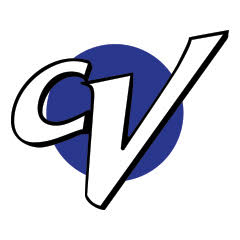One of the rules that set criterium racing apart from other forms of road racing is the free lap rule (3D5). Criteriums are circuit races held on a small (800 m to 5 km) course which is entirely closed to traffic (sometimes when you have a course which is not entirely closed to traffic you will hear the “this is a circuit race held under criterium rules” stated in the race instructions).
The criterium with a multitude of short laps puts a different spin on road racing. Circuit races by contrast are really just road races with a course that folds over on itself. To understand the difference between a criterium and a circuit race, you must envision the circuit race as if it were actually strung out with a point A start and a point B finish. Hence it makes no more sense to have a free lap in a circuit race than it does in a point A-to-point B road race.
Criterium racing originated in Europe where the events are often show cases featuring star studded invitational fields performing with an emphasis on entertainment (indeed spectators often pay a fee to attend). As such the free lap rule was developed to keep misfortune in the form of crashes or mechanical mishaps from ruining the show.
A criterium may have one or more repair pits to facilitate free laps. To be eligible for a free lap, riders must report to the race official in the pit. Riders re-enter the race in the position held at the time of the mishap (rejoining at the rear of the group). Riders taking a free lap are ineligible for lap prizes (primes) for one lap after re-entering the race. Officials in the pit inspect the mishap for legitimacy and direct the re-entry of the riders.
Riders do not have to complete the entire lap on which the mishap occurred to report to the pit. They may cut the course or even reverse direction (never ride backward on the course, but rather dismount and run – Rule 3D2). On short courses (less than 1 km), two laps per mishap may be granted.
A rider granted a free lap must re-enter the race before the final 8 km of the race. After that point in the race you can still enter the pit to affect repairs but you are losing ground on the field during that time. Normally the Chief Referee will announce the number of laps remaining before which riders must re-enter the race and races being run on a time schedule will switch to lap cards at least 8 km before the finish.
Check the race announcement for details about whether the promoter is providing neutral mechanical support or if the pit is “wheels-in-wheels-out” (riders supply their own spare equipment). If you are leaving spare wheels in the pit, label them and remember to pick them up promptly after your race. The officials and promoter usually do not accept responsibility for stolen equipment.
By far the greatest misunderstanding riders have about the free lap rule is what constitutes a legitimate “mishap”. Mishaps may be crashes or the mechanical failure of an essential piece of equipment. To claim a free lap as the result of a crash, you must have actually been involved in a crash. Being caught behind the crash and delayed does not qualify. Running off the road to avoid the crash does not qualify. Referees are looking for evidence like a scrape or scuff marks (mud or blood). Equipment failure due to faulty adjustments or maintenance does not qualify. Flat tires, broken components (cranks, frame, spokes, handlebars) are mishaps. Lose handlebars, thrown chains (misadjusted derailleur), and tubular tires separating from the rim are not. Don’t be insulted if the pit official pumps air into your “flat” tire to see if it holds…the Chief Referee can still disqualify the free lap and score you a lap down.

